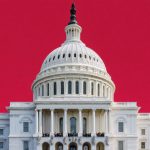
The Great Government Shake-Up: Layoffs and the Fate of Federal Efficiency
- The Trump administration, led by Elon Musk in the new Department of Government Efficiency, initiates major workforce cuts, impacting the federal sector.
- About 50 U.S. Digital Service members are let go, sparking a debate over the mission to streamline government spending.
- Jonathan Kamens, a former VA website security expert, voices concerns about possible weakening of essential structures.
- Thousands of federal employees face layoffs, casting uncertainty on the future of public services.
- Proponents claim these layoffs aim to save millions and refocus resources, while critics worry about eroding vital capabilities.
- The broader question remains whether workforce reductions truly enhance governmental efficiency.
- Potential risks to privacy and service delivery emerge, highlighting the national stakes involved in the restructuring.
A seismic shift reverberates through the federal workforce as the Trump administration, with Elon Musk at the helm of the newly minted Department of Government Efficiency, paves the way for sweeping layoffs. Among the dismissed is Jonathan Kamens, an information security expert who once safeguarded the Veterans Affairs website. After dedicating over 30 years to the private tech sector, Kamens found himself thrust into a turbulent political whirlpool.
The decision to cut loose roughly 50 members of the U.S. Digital Service, a body originally formed to bring digital savvy to government processes, has ignited a fierce debate about the administration’s purported mission to streamline spending. Kamens, amidst the uncertainty, voices a stark warning: reckless dismissals may weaken the very structures designed to serve American citizens.
With federal agencies executing layoffs across the board, thousands of employees face sudden unemployment, their futures cast into doubt. The administration claims these moves will save millions and refocus resources toward essential services. Yet, critics argue that such cuts risk dismantling the intricate networks required to support the nation.
As Kamens steps away from his role, he reflects on the broader implications of these actions. For him, the issue transcends personal loss; it signals a turning point in how America’s government operates. While layoff proponents tout fiscal prudence, detractors see an erosion of institutional capability.
Beyond the termination letters and executive orders lies a crucial question: Does reducing the workforce inherently enhance efficiency? For Kamens and many others, the answer remains uncertain, with potential risks to both privacy and service delivery hanging in the balance. In this national reshuffling, the stakes are more than financial—they are fundamentally about the government’s ability to fulfill its promise to its people.
Is Streamlining the Federal Workforce a Double-Edged Sword?
Analyzing the Impact of Federal Workforce Layoffs
The recent decisions around federal workforce layoffs have stirred a complex debate about efficiency versus capability. Spearheaded by the Trump administration with Elon Musk leading the Department of Government Efficiency, the layoffs aim to streamline government operations. However, these measures carry potential risks that extend beyond immediate financial considerations. Let’s delve deeper into the implications, industry trends, potential controversies, and actionable insights.
How-To Steps & Life Hacks
Surviving Federal Layoffs:
1. Enhance Transferable Skills: Focus on gaining certifications and skills that are valuable both in government and the private sector.
2. Update Your Resume: Highlight achievements and skills pertinent to private industry roles.
3. Leverage Networking: Utilize platforms like LinkedIn and alumni associations to connect with potential employers.
4. Consider Gig Economy Opportunities: Platforms like Upwork and Fiverr can offer short-term projects that bridge gaps between jobs.
5. Stay Informed: Keep up-to-date with any federal employment benefits or retraining programs offered to laid-off workers.
Real-World Use Cases
The U.S. Digital Service, which lost approximately 50 members, serves as a testing ground for understanding the impact of these layoffs. Previously, this agency improved government digital interfaces and introduced efficiencies that enhanced service delivery. With these layoffs, the ripple effects could mean slower tech integrations and reduced innovation within federal operations.
Market Forecasts & Industry Trends
The government sector is expected to witness increased privatization, where roles traditionally handled by full-time government employees may shift to private contractors. The trend suggests more tech companies might collaborate with federal agencies, likely increasing tech job opportunities but also altering job security and benefits structures typically seen in public employment.
Reviews & Comparisons
Comparing this situation to corporate downsizing, federal layoffs aim not only for cost-savings but also for operational revamp. However, critics argue these moves often overlook the intangible cost of lost expertise and institutional knowledge, similar to what occurs when companies opt for mass layoffs without strategic forethought.
Controversies & Limitations
Critics argue that these layoffs could result in a security vacuum, particularly in fields like information security, previously overseen by experts such as Jonathan Kamens. A diminished workforce could hinder the execution of crucial digital protections, exposing federal data to greater risks.
Features, Specs & Pricing
While details about specific budget allocations remain undisclosed, the administration anticipates saving millions by minimizing payroll. However, this raises questions about whether the potential decline in service quality could outweigh the supposed fiscal benefits.
Security & Sustainability
Security risks loom as significant expertise is lost. Information security experts like Kamens demonstrate that streamlined operations cannot replace the nuanced understanding of data protection in government frameworks. Sustainable operations depend on balancing efficiency with comprehensive expertise.
Insights & Predictions
Experts predict that while immediate cost savings may be evident, long-term implications could include weakened federal capabilities in tech and cybersecurity domains. This may prompt increased reliance on external consultants and contractors, possibly escalating expenses over time.
Pros & Cons Overview
Pros:
– Potential reduction in government spending.
– Streamlined processes could lead to enhanced productivity.
Cons:
– Loss of expertise could lead to compromised security and inefficiency.
– Potential decrease in quality of public service.
– Unemployment rise within specific sectors.
Actionable Recommendations
1. Government and Private Sector Collaboration: Foster partnerships to harness private sector efficiency while retaining essential federal oversight.
2. Reinvestment in Training: Allocate funds saved from layoffs to retraining laid-off employees for roles in consultancy or contracting capacities.
3. Enhanced Security Protocols: Even with reduced staff, prioritize cybersecurity updates and protocols to safeguard national data.
4. Public Feedback Loops: Establish channels for citizen feedback to ensure services remain efficient and meet public needs.
For more insights, visit the official White House site to explore federal strategies and resources relevant to laid-off employees.
By evaluating these dimensions, individuals and policymakers can navigate the intricate balance between fiscal responsibility and maintaining a robust, capable federal workforce.















